Cheap and with a low consumption. The recipe for the Suzuki Swift is the same as it has always been, even though it is in a completely fresh fourth generation – and that is quite liberating.
Bilbasen was invited to Bordeaux by Suzuki Denmark.
The small minicars are killed in droves. Most recently, we surprisingly said goodbye to Fiesta after 47 years. However, the mass killing does not mean that a need has disappeared. At least not in Denmark, where we continue to demand small, cheap cars. Also on petrol.
Suzuki Swift goes against the grain. In the brand new fourth generation, 3 electric hp are available from a mild hybrid system as the only power supply, while a new 3-cylinder petrol engine really does the work. Consumption is low, and so is the price, exactly as expected by Familien Danmark in the still popular B-class.
In French spring weather, I race in the new Swift and see what the Japanese budget Basque can do.
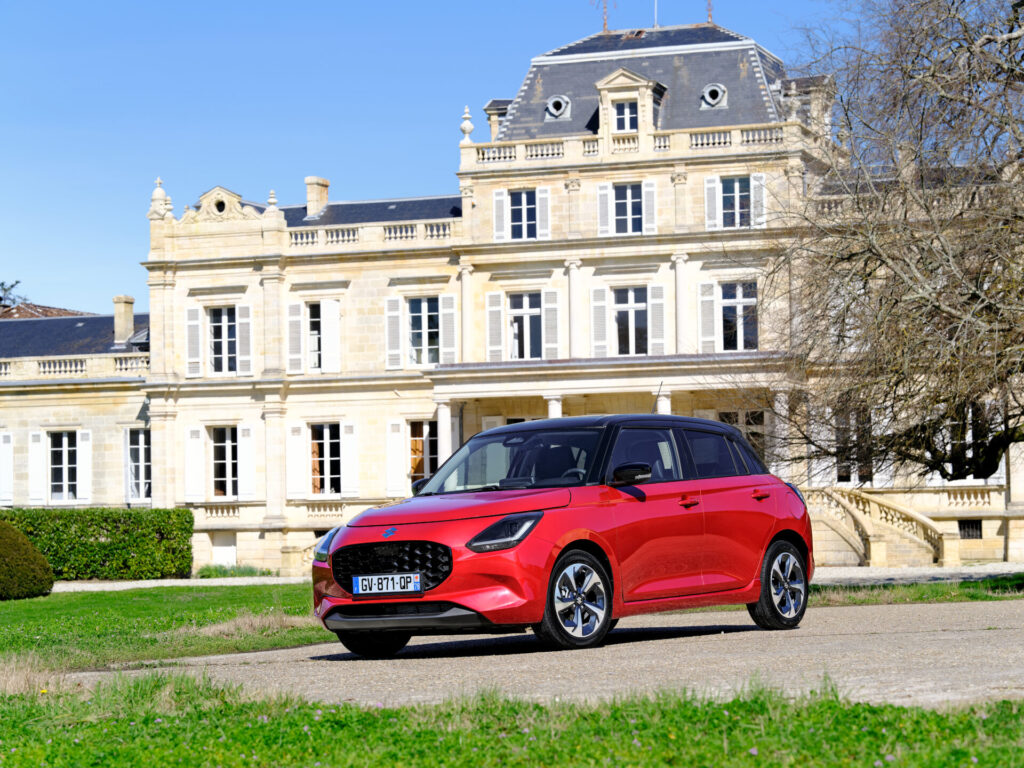
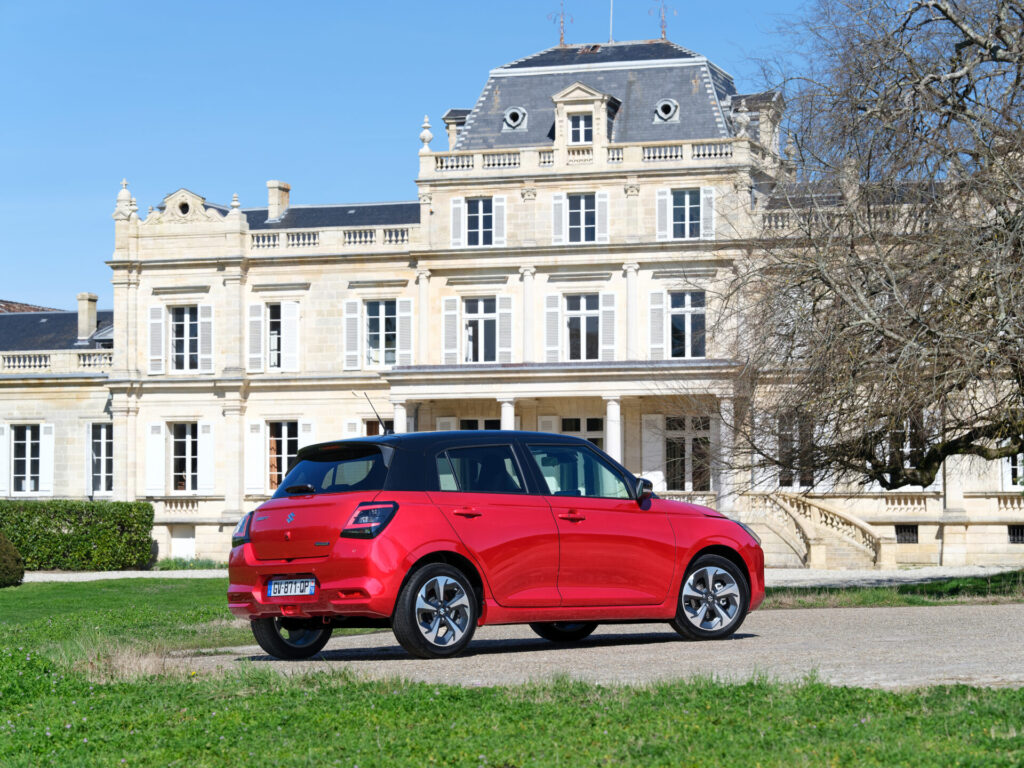
What is it?
Yes, what is it? I could easily say a thing or two about the exterior design, but I’ll leave that to the eye of the beholder. Instead, I can tell you about a new Suzuki Swift that has grown surprisingly little from its predecessor.
The wheelbase, width, height and even the trunk are exactly the same dimensions as seen in the third generation. Only the length has grown by a minimal 1.5 cm.
It smells like the platform is recycled – and it is. However, that does not change the fact that the fourth generation Suzuki Swift is a new car. Both body and chassis have been updated, stiffened and tightened up compared to its predecessor, while the engine is a newly developed 3-cylinder affair.
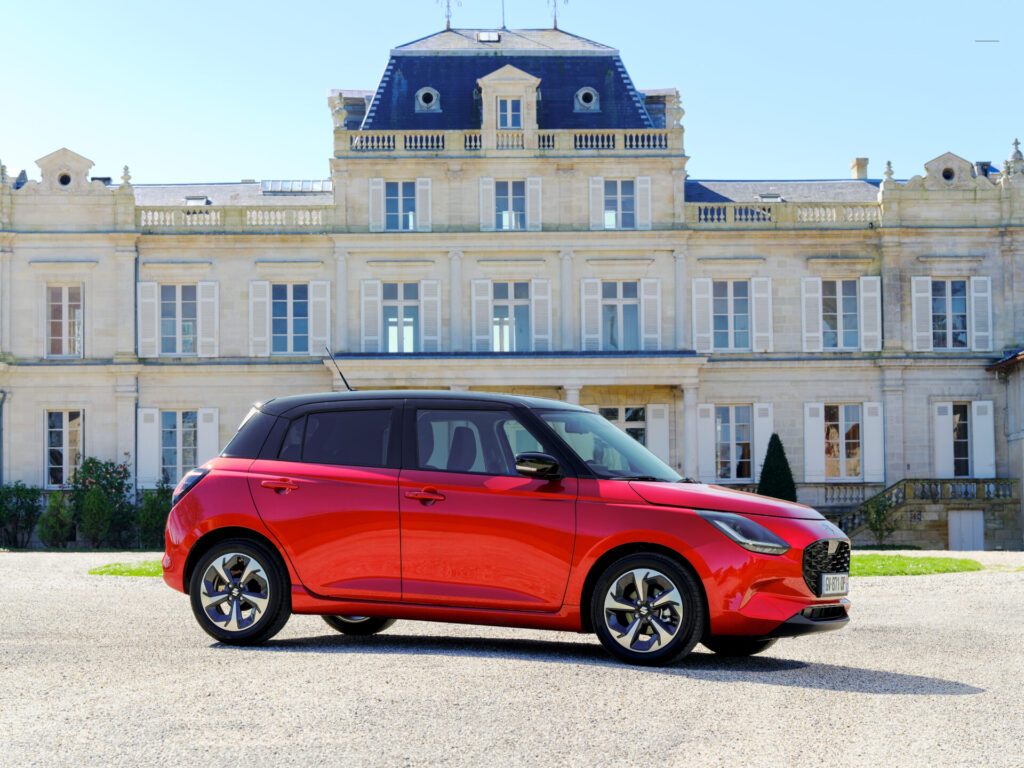
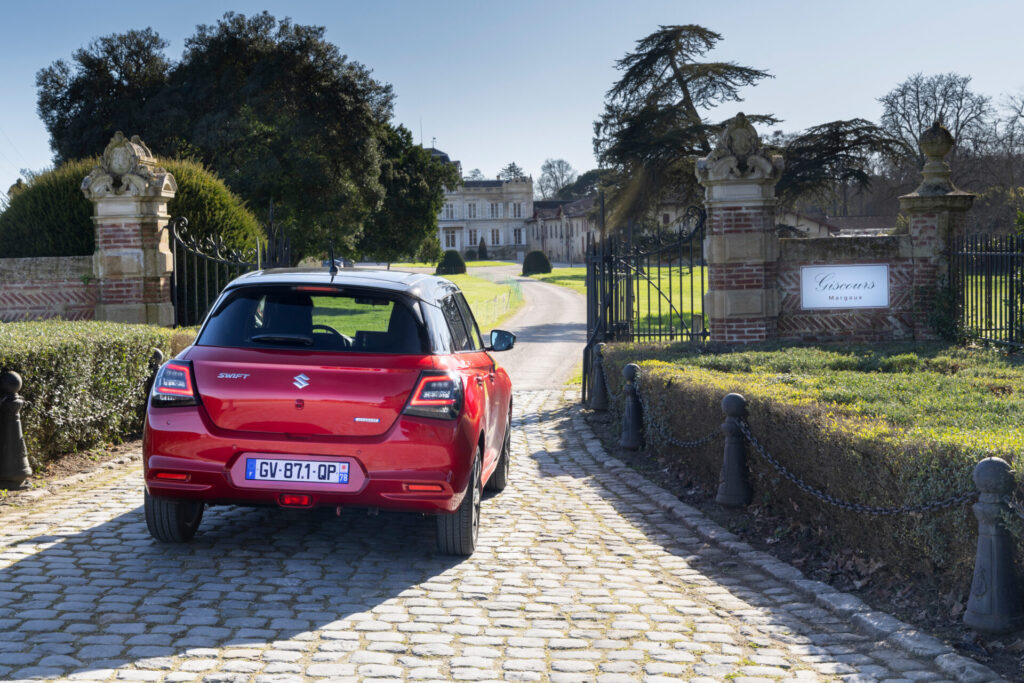
The mild hybrid system is the same as in other Suzuki models. The credit for the improvement in economy and emissions should therefore not go to the electricity, but instead to the new engine and better aerodynamics. Swift now runs 22.7 km/l with CO2 emissions of 98 g/CO2 per These are improvements of 7 and 8 percent, respectively, and not that little.
If you look at the popular class of minicars, the B class, it doesn’t get much better. Here, the Swift with a new engine sneaks up around the Toyota Yaris Hybrid, which emits 87 g/CO2 per km. And it is, as the name suggests, a regular hybrid with a battery and not just a 12V generator as in the Swift.
How does it run?
The Swift has always been a fun car to drive. With a tightening of the chassis as well as a new steering with Teflon(!) in the suspension for limited friction, Suzuki promises a Swift that is more fun to drive than ever before. The curb weight of just 949 kg also helps with this and makes the total of 82 hp seem more acceptable.
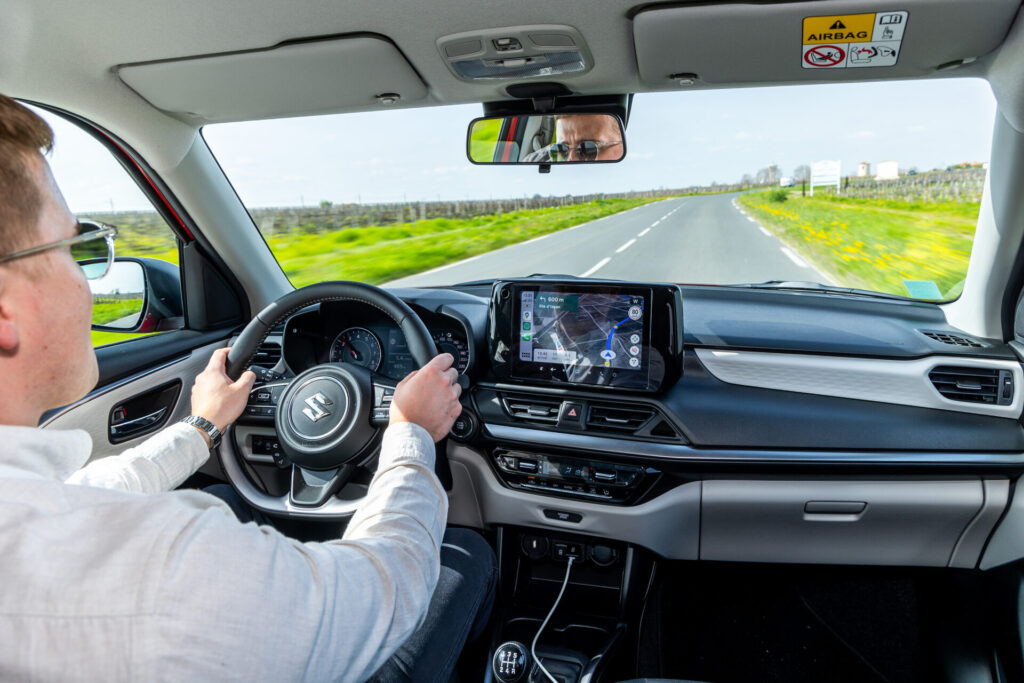
The claim is tested on the country roads around the Margaux wine country, where tractors with valuable grapes on the trailer have left their mark on the surface. The rough-cut asphalt reveals an undercarriage that has indeed been tightened up – perhaps even too much.
The Suzuki Swift is a so-called world car, built on a budget for use in New Delhi as the Nykøbing Falster. The chassis is therefore more robust than it is complex, and with a tight set-up there is not much to mask sharp bumps. You are rumbled around well on uneven ground.
On more forgiving grounds, the claim nevertheless turns out to be true. The Suzuki Swift is first and foremost an uncomplicated and easy-to-drive car. If you offer it up for a dance, however, the Swift can easily be lured into a turn, where featherweight and unspoiled mechanics guarantee driving pleasure. The new steering is well weighted with a clear connection to the front wheels.
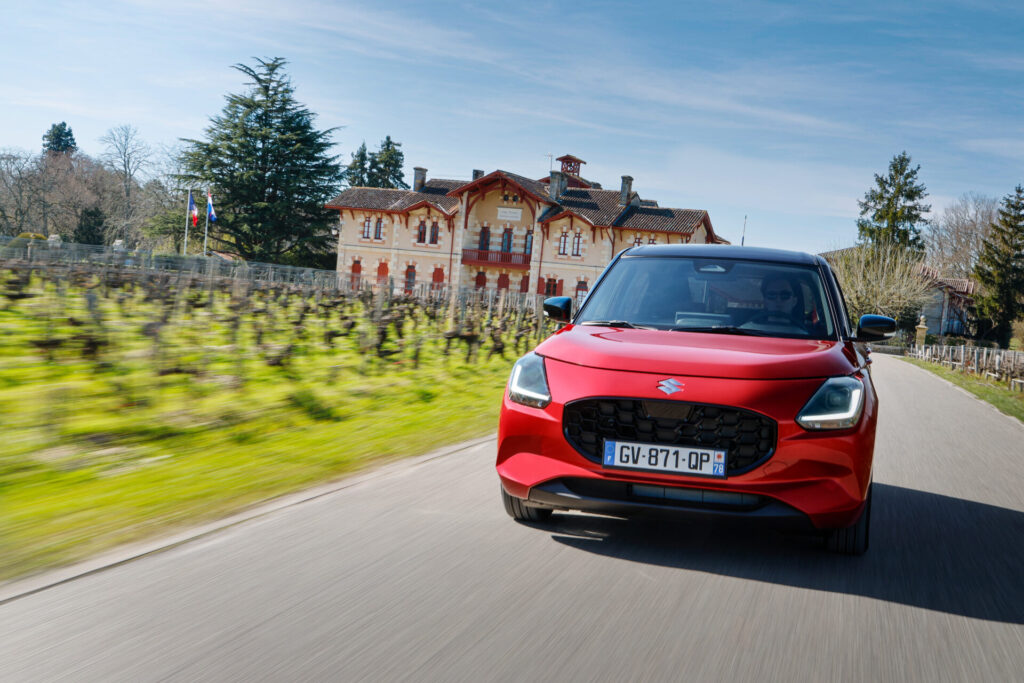
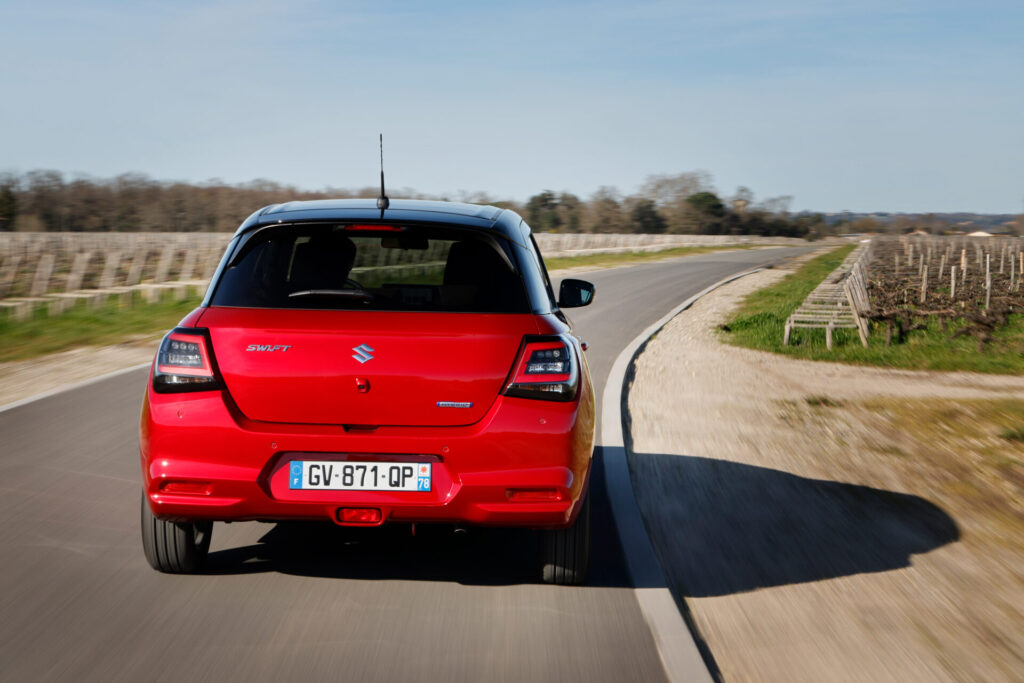
In the previous Swift, the engine was part of the playfulness, as high revs were needed before it wringed out its limited powers. The new engine is more restrained in appearance and sound, but with more torque and better gearing. It feels more grown up.
Speaking of gearing, the test car runs with a manual gearbox, which also contributes to driving pleasure. It is not surgically sharp, but it is simple and mechanical. Later comes a CVT gearbox, launched in the two highest of three trim levels.
How is the cabin?
Significantly improved; especially on the technology front. Because where with a diligent thrift you could order the previous Swift with a CD player without an infotainment screen, it now comes with a 9″ infotainment screen as standard. There is also wireless connection to Apple CarPlay and Android Auto.
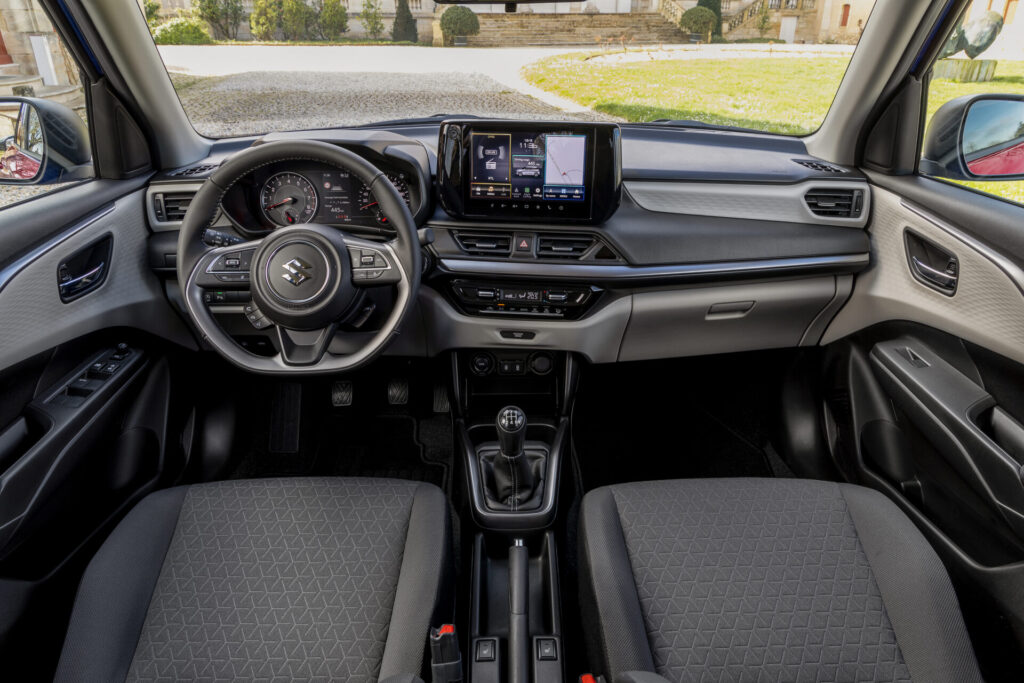
The homemade system does not win any awards for ease of use, but the screen is clear in resolution and the pressure sensitivity is high. With Apple CarPlay enabled, no one is complaining. In addition, the screen is now also positioned at the right height, unlike its predecessor, so that the eyes do not have to be too far from the road.
Like its predecessor, soft plastic panels are far between, and that’s ok because it’s a budget car. However, a lot has been done for design and set-up, where you now have a more driver-oriented cockpit, an airy design of the instrument panel and 3D pattern in the door sides. It gives something to look at and something to touch.
Since the Swift has not grown as mentioned, the space conditions are much the same with a back seat that is decent without being impressive. Impressive, on the other hand, is the improvement that has been found in the driver’s position, since you sat a little awkwardly behind the wheel of the third generation.
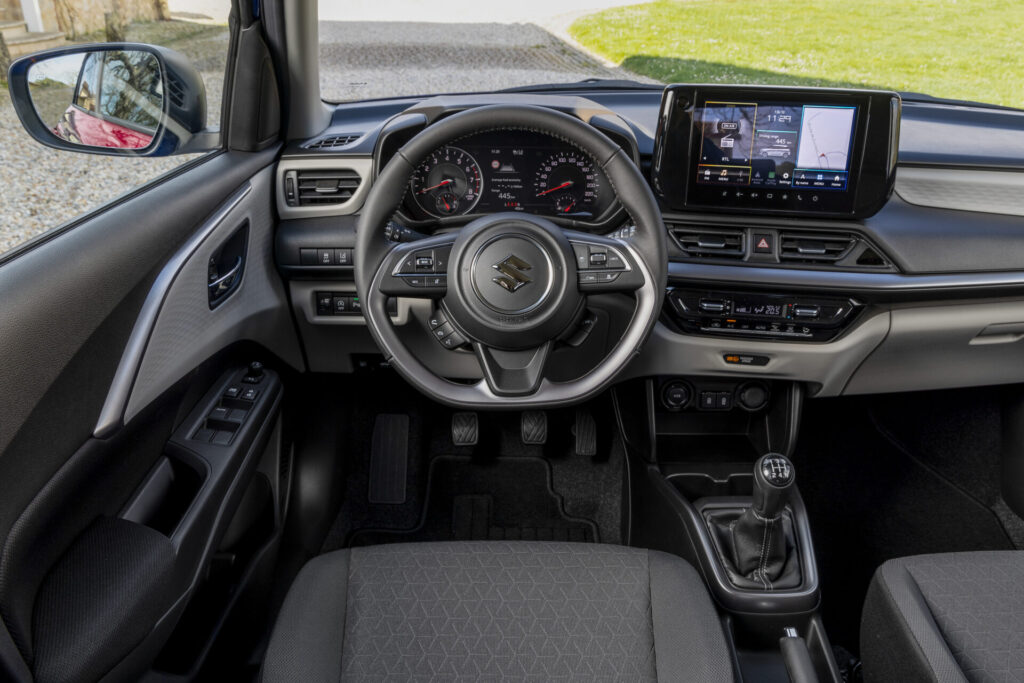
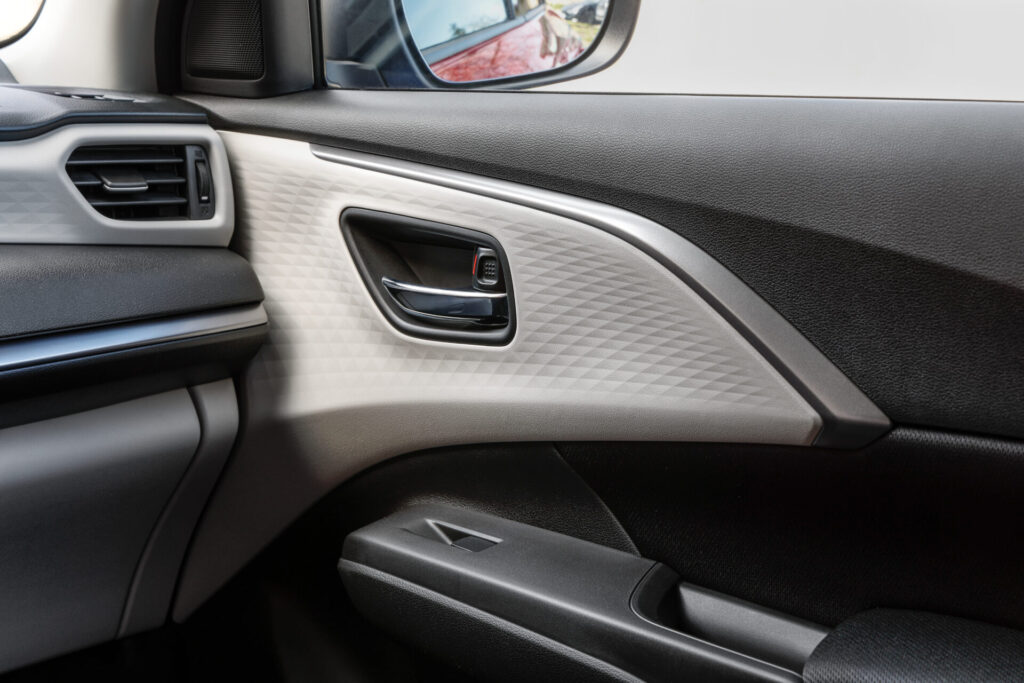
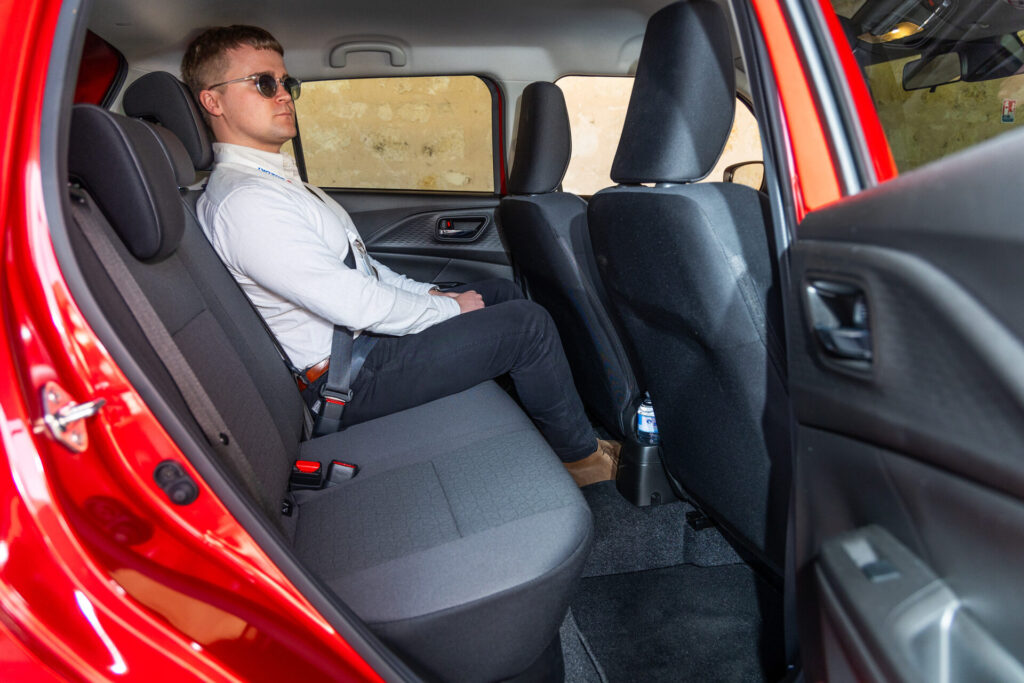
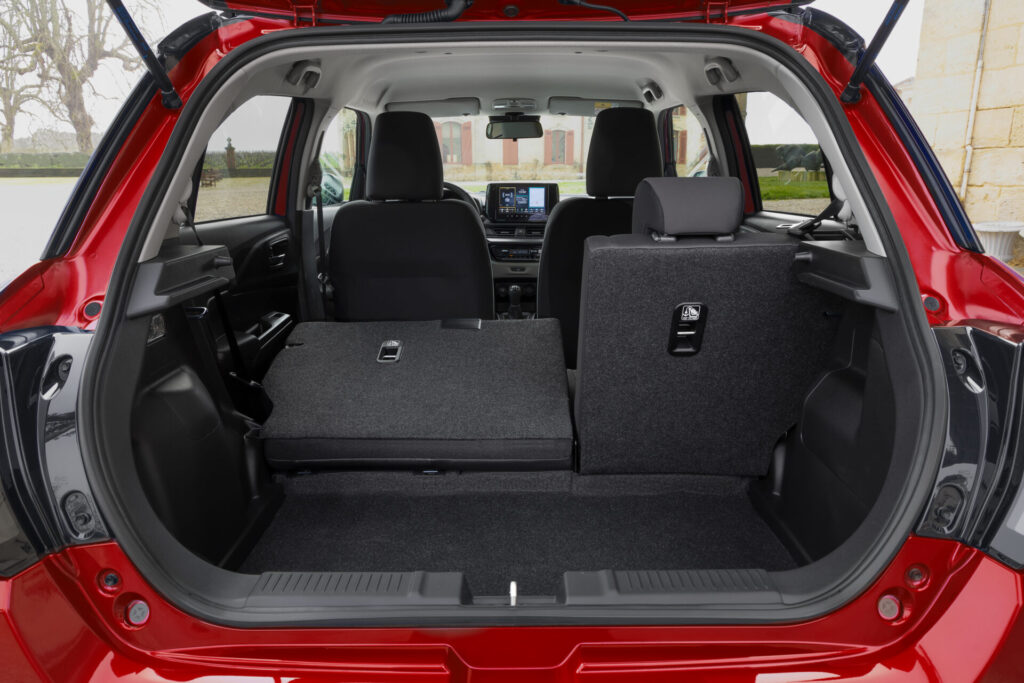
In the new Suzuki Swift, you sit as you should in relation to the steering wheel, pedals and the rest of the cabin’s operating options. You also sit well even on longer stretches, as the seats are now of a different caliber with considerably better support.
Prices and equipment
The prices of the new Swift are not yet clear, but still, room is made for a well-qualified guess from the fine people at Suzuki. It is their clear expectation that the new Swift ends up at the same price level as its predecessor, i.e. somewhere between DKK 170 and 175,000.
If it holds up, it’s a great price. Because in addition to a major technical overhaul, the new Suzuki Swift also comes with a longer list of standard equipment. The fine 9″ screen is standard together with rear camera and P-sensor, keyless operation, electric rear windows, air conditioning and active cruise control.
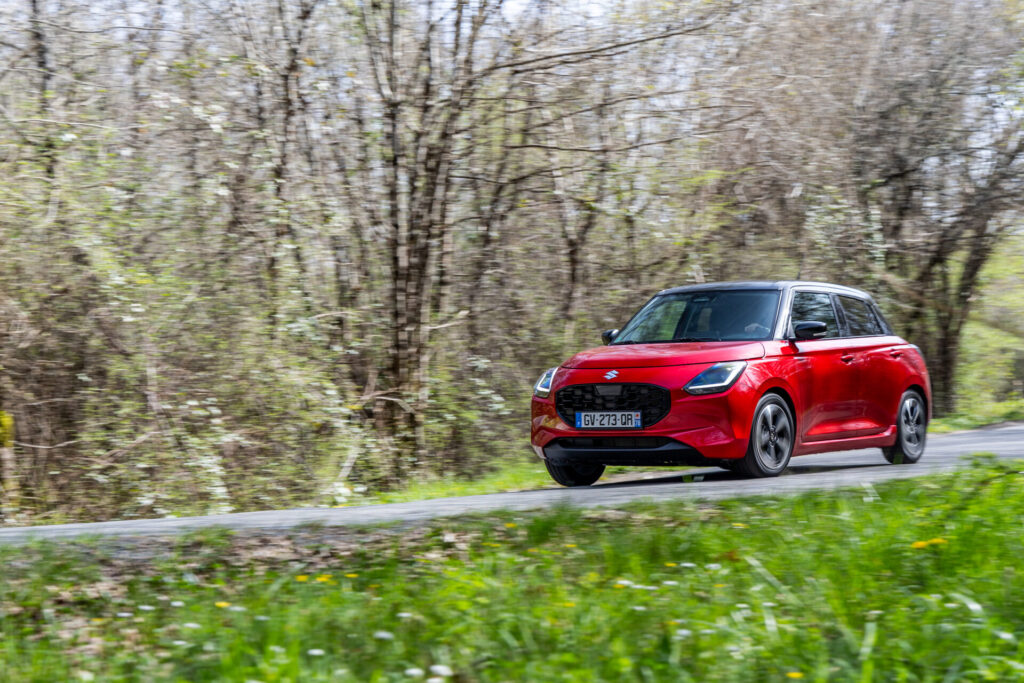
On the safety front, you get an emergency brake with recognition of pedestrians, cyclists and motorcyclists. Also included are blind spot alarm, driver monitoring, lane assist, rear traffic warning, LED lights and automatic high beam dimming.
It’s a nice package of safety systems, and the majority of them are required by the so-called GSR regulations from the EU, General Safety Regulationfor July 2024. It is GSR that makes car production more expensive and therefore what is helping to kill the cheap minicars.
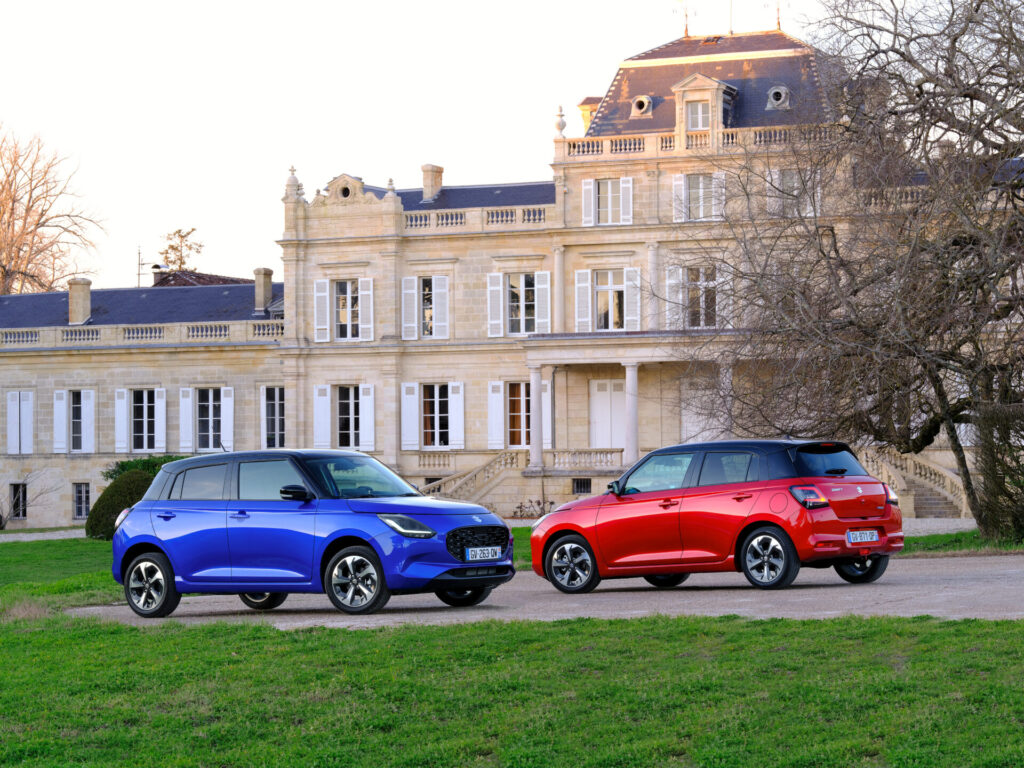
Suzuki has volume with it as a world car. 44,000 of them have been sold in Denmark and 9 million worldwide, and of the new one, Suzuki expects to sell 2,000 per year here at home. It is not unthinkable, as the B-class is still the third largest, and 97 percent of these in 2023 were petrol-powered.
The new Suzuki Swift is a rarity and a liberating break for electric cars, which are increasingly computers on wheels. Swift has always been a small, cheap and economical car for better or for worse, and if you still need such a budget car, the new fourth generation is still relevant with a nice equipment package as well as low price and low consumption.
Suzuki Swift
Engine: R3, 1,197 cm3
Performance: 82 hp / 111 Nm
0-100 km/h: 12.5 sec.
Top speed: 165 km/h
Spending: 22.7 km/l
CO2 emissions: 98 grams/km
Dimensions (L/W/H): 386/173/149 cm
Curb weight: 949 kilos
Draw weight: 1,000 kilos
Trunk volume: 265-980 litres
Price: Not informed
Private leasing (one-off payment/monthly payment): Not informed
Tax basis, company car: Not informed
